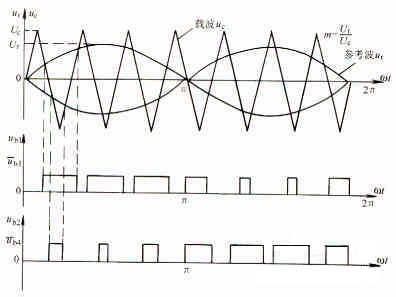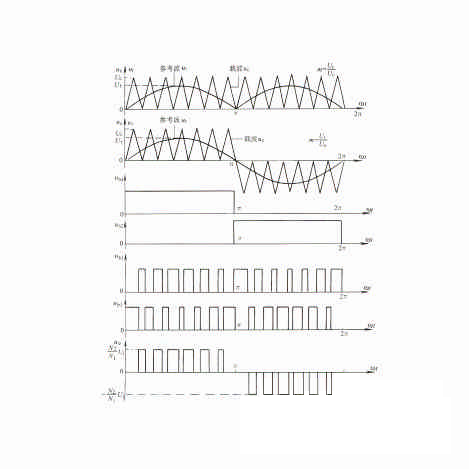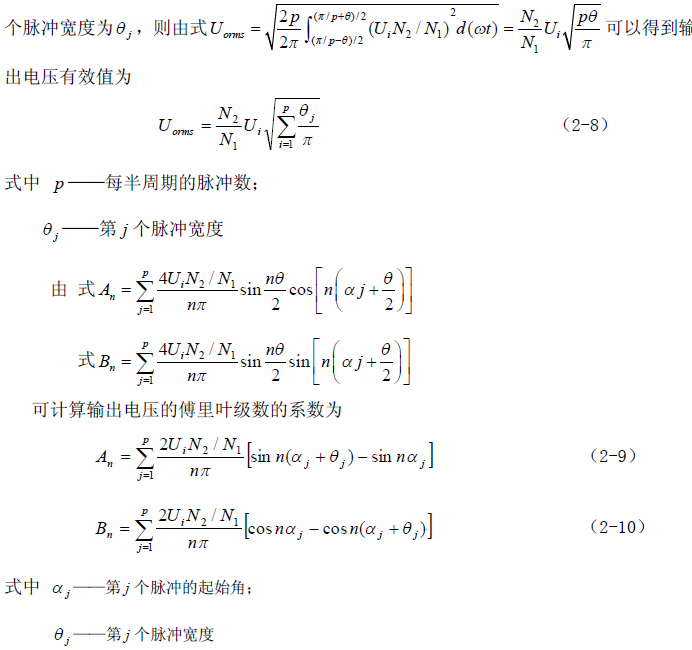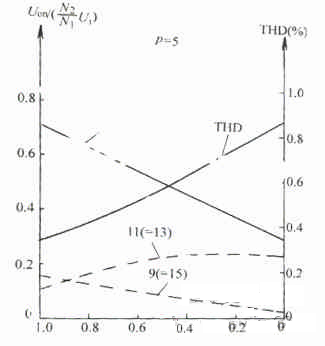Unipolar Sine Wave Pulse Width Modulation
With the development of power devices, sine wave pulse width modulation (SPWM) technology has been widely used. SPWM control is to chop DC power into a pulse sequence with equal amplitude and width changing according to the sine law within one cycle of the inverter outputting AC power. The width of the pulse sequence is a discrete pulse that changes with the amplitude of the sine wave. After filtering, the sine wave AC power is obtained.
With the development of power devices, sine wave pulse width modulation (SPWM) technology has been widely used. SPWM control is to chop DC power into a pulse sequence with equal amplitude and width changing according to the sine law within one cycle of the inverter outputting AC power. The width of the pulse sequence is a discrete pulse that changes with the amplitude of the sine wave. After filtering, the sine wave AC power is obtained.

Figure 1 Unipolar sinusoidal pulse width modulation (SPWM) principle waveform a) Bidirectional triangle carrier

Figure 2 Principle waveform of unipolar sinusoidal pulse width modulation (SPWM) (continued) b)
The unidirectional triangular carrier reference wave frequency fr determines the output frequency fo, and the number of pulses per half cycle is determined by the carrier frequency fc.

By changing the reference sine wave amplitude to change the modulation index, the output voltage peak changes from 0 to Ui*N2 / Ni. If there are 5 modulation pulses in the jth half cycle as an example, the relationship between the harmonic content, THD and modulation index of unipolar sinusoidal pulse width modulation is shown in Figure 3. Its THD is significantly lower than that of multi-pulse width modulation. This type of modulation method eliminates all harmonics lower than or equal to 2p-1, and the lowest harmonic is 9th when p = 5.



